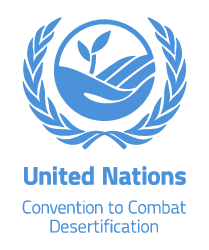Location
The United Nations Convention to Combat Desertification in Those Countries Experiencing Serious Drought and/or Desertification, Particularly in Africa (UNCCD) is a Convention to combat desertification and mitigate the effects of drought through national action programs that incorporate long-term strategies supported by international cooperation and partnership arrangements.
Members:
Resources
Displaying 86 - 90 of 586Nature Risk Rising: Why the Crisis Engulfing Nature Matters for Business and the Economy
Nature loss is a planetary emergency. Humanity has already wiped out 83% of wild mammals and half of all plants and severely altered three-quarters of ice-free land and two-thirds of marine environments. One million species are at risk of extinction in the coming decades – a rate tens to hundreds of times higher than the average over the past 10 million years. The World Economic Forum’s 2020 Global Risks Report ranks biodiversity loss and ecosystem collapse as one of the top five threats humanity will face in the next ten years.
Evicted by Climate Change: Confronting the Gendered Impacts of Climate-induced Displacement
In a world in which poverty is increasingly concentrated in vulnerable or fragile states, and fragility is increasingly driven by climate change, climate-induced displacement has become one of the most visible manifestations of the relationship between ecological and societal breakdown. Newest figures from the Internal Displacement Monitoring Centre reveal that over 70% of the 33 million newly displaced people (2019) had climate-related triggers.
IPBES Workshop on Biodiversity and Pandemics
Land use change is a major global driver of pandemic risk. Land usechange is a significant driver of the transmission and emergence of infectious diseases 40,177-179. Land use changeis cited as the cause of over 30% of emerging infectious diseases, and correlates significantly withthe emergence of novel zoonoses globally 13,180. However, the mechanisms by which diseases emergeare context-specific and scale-dependent.
Reversing Land Degradation in Drylands: The Case for Farmer Managed Natural Regeneration (FMNR) in the Upper West Region of Ghana.
The Lawra district of the Upper West region was selected as the case study. This study compared crop yields for FMNR and non-FMNR farmers. FMNR farmers are classified as having at least 8 trees per acre, with an average of 13 trees per acre (33 per ha) and a maximum of 40. Non-FMNR farmers are classified as having between 1 and 7 trees per acre, with an average of 5.Qualitative (focus group discussion) and quantitative (household survey) data were collected in April to May 2019. Over 500 households were interviewed in both CIKOD intervention communities and control sites.
Improving international soil governance – Analysis and recommendations. Final report
This study develops options for the German government to improve international soil governance in the short, medium and long term. The study first takes stock of existing international instruments and institutions that are relevant for soil protection and its governance at the international level. It as-sesses the actual and potential steering effect of, inter alia, the Desertification Convention, the Biodiversity Convention, the Paris Agreement and climate regime, regional treaties, FAO, UNEP, IPBES and IPCC.


